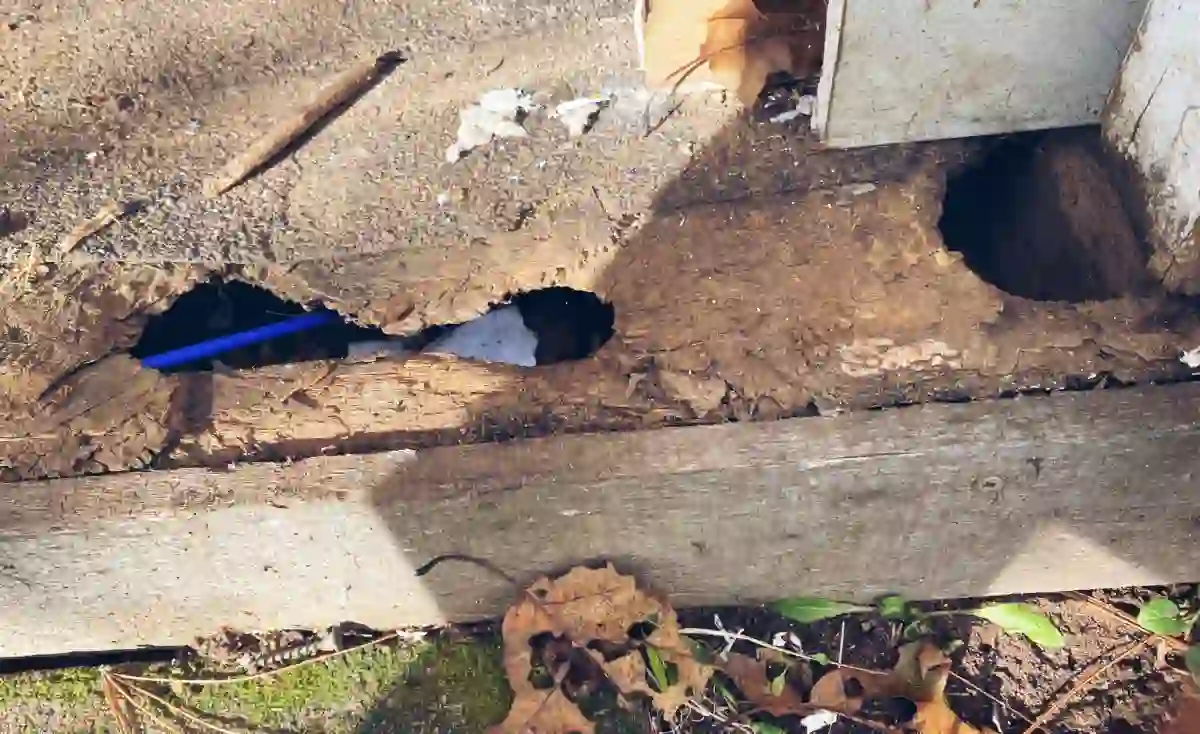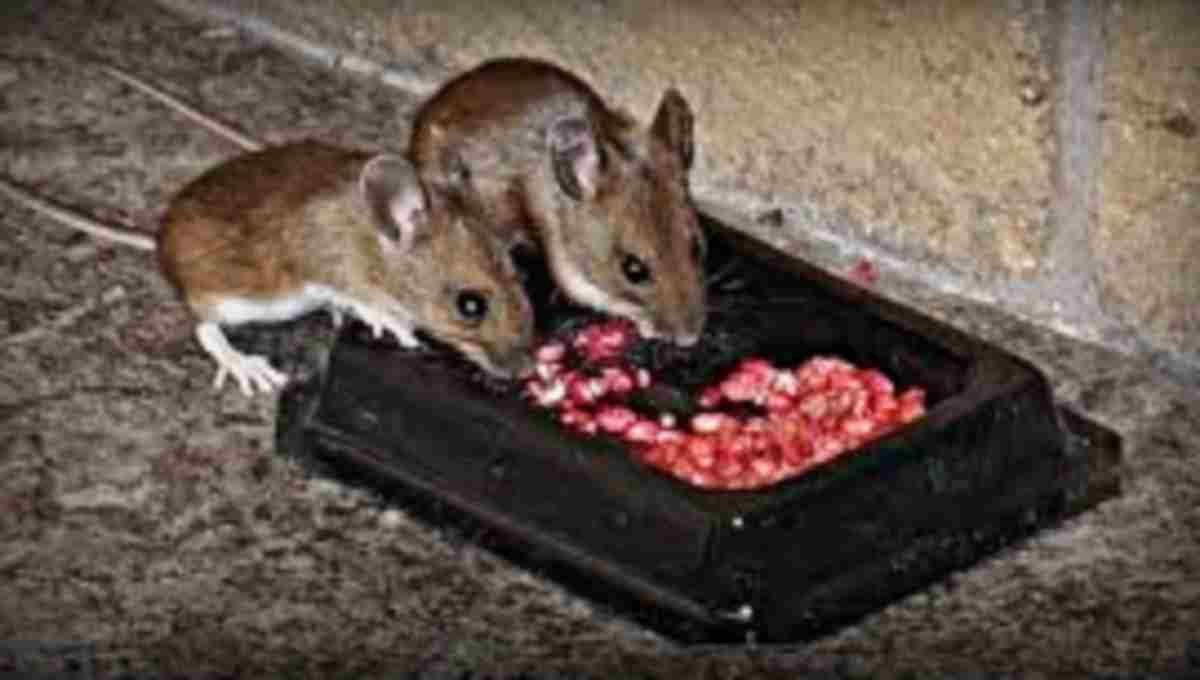Is your peanut butter mouse trap not working? This publication explains the possible causes of why your trap is not catching mice. Due to this event, some homeowners are forced to ask a question like “Can mice lick peanut butter off a trap without setting it off?” Yes, they can. Here is a video evidence of mouse licking peanut butter without triggering the trap.
Mice are good are taking little, delicate licks, making it possible for them to lick peanut butter off the latch without setting off the trap.
Generally, a peanut butter mouse trap is a common technique to catch mice in your home or workplace. It gets rid of mice quickly and easily. People, however, do make mistakes when using these traps and they can end up being ineffective.
Therefore, what are the reasons your peanut butter mouse trap is not working? This issue could be caused by different reasons which may include placing the traps in the wrong spots, underestimating the activity of mice, or even handling the bait with your bare hands.
Can mice eat peanut butter off a trap without setting it off?
Mice can eat peanut butter off a trap without setting it off. That’s not to say that peanut butter is not effective. In fact, it’s a commonly used method to catch mice in many homes.
However, even though mice are attracted to nuts and seeds, peanut butter traps can be inconsistent, such that a mouse can sometimes take it off the trap or even consume it on the trap without setting it off.
Alternatively, you can use hazelnut spread or chocolate. If you prefer to trap a mouse with solid foods, you need food that can be tied to the trigger.

Peanut butter mouse trap not working
Below are the reasons and fixes for your peanut butter mouse trap not working:
1. You handled peanut butter with bare hands
Reports show that you smell, and mice can tell. Mice can detect the scent of humans on the bait which is placed in the trap because they have a very sensitive sense of smell.
As such, using your bare hands to handle peanut butter for bait can stop the trap from working properly as the bait smell has been contaminated with your human scent. In order to avoid this, handle the bait and also set up the trap by using hand gloves.
Also, to avoid contamination and further issues, do not forget to make use of gloves before touching a peanut butter mouse trap that has captured a rodent. You can choose thicker gloves which will also protect your fingers from accidentally getting snapped by the trap. Moreover, you don’t want to touch the mouse droppings with bare hands.
2. Your bait is ineffective
Peanut butter is one of the most effective baits to use in capturing mice in traps. Wild rodents feed on byproducts of nuts such as peanut butter or hazelnut. Therefore using a little amount of peanut butter on the trap helps in catching mice. Otherwise, mice will eat the bait without setting off the trap.
Also, you can make do with anything that has a sweet or salty smell because mice love food with a strong scent such as soft candies, gumdrops, and strong-smelling cheese. You can also attract the rodent to the trap by making use of meats such as bacon and jerky.
If your bait seems to be ineffective, you can make use of mice nesting materials on the trap like dental floss, cotton, or string to attract more mice.
Now, speaking of ineffective baits, do mice like smooth or crunchy peanut butter? Mice like any type of peanut butter – crunchy or smooth. Generally, mice are not that picky, so you can use crunchy or smooth peanut butter in your traps. Mice are also attracted to nut butter such as cashew butter and hazelnut.
3. Your trap is in an open space
Placing a peanut mouse trap in open spaces is another mistake people make, resulting in the peanut butter mouse trap not working. Naturally, mice prefer dark areas and they move close to the walls of your house.
To get your peanut butter trap to catch mice, set up the trap facing the walls so that mice are forced to explore the trap instead of avoiding it.
When setting multiple traps, place them around 2-3 feet away from each other. More can also be placed in areas with increased rodent activity and you are likely to catch mice and also get rid of them from your home eventually.
4. Excessive peanut butter in the trap
How much peanut butter do you put on a mousetrap? The answer is “not too much”.
Placing a lot of peanut butter in your mouse trap can render it ineffective, the reason being that the mouse will be able to easily eat some of the peanut butter without setting off the trap.
On that note, you are worsening your mice problems by creating more food sources for the rodent. Therefore, it is best to place a pea-sized amount on the trap so the mouse will be forced to step on it.
This raises the question: can a mouse lick peanut butter off a trap? Yes, a mouse can lick peanut butter off a trap.
5. You’re using the wrong trap
A mouse trap can be ineffective if you are making use of the wrong trap. Instead, you would be better off repelling the mice without a trap at all. Most traps are simply more effective than others and you might want to test different ones to know which is working effectively.
There are different kinds of traps sold in your local stores or online, so try a new trap for a more effective solution to help to eliminate the mice problem.
6. Peanut butter no longer fresh and attractive
If your peanut butter bait is not changed regularly, the trap will be ineffective since the bait can’t attract mice. Your trap will simply not be able to catch mice since mice are attracted to the smell, which is no longer there. In order to prevent this, your peanut bait should be changed every 4-6 weeks to keep it fresh and avoid decay.
According to experts on Healthline, peanut butter generally has a long shelf life. In the pantry, commercial peanut butter may last 6–24 months unopened, or 2–3 months once opened. However, natural peanut butter doesn’t contain preservatives, so it may only last several months unopened, or up to a month once opened.
Why are mice not eating peanut butter? Usually, your peanut butter smelling bad or losing its freshness could be the reason mice avoid the trap.
And that leads to the question: how long can you leave peanut butter on a mouse trap? It’s advisable to leave peanut butter on the mouse trap for a month or a few weeks and then replace it with fresh nuts butter for effectiveness.
7. The mice are outsmarting you
Since mice are smart, pesky creatures, they are likely to avoid the traps for the first few days. Besides, mice can stay for some time without food and water. So, it could be helpful to put your peanut butter on unset traps for mice to feed on for some time until they are used to it. Thereafter, the trap can be set up to catch them.
Although this method is helpful, it won’t capture all the mice in your home quickly. The inferior mice are the first to get caught in the trap while the superior ones are very careful not to get caught.
8. Another rodent is stealing the bait
What can eat peanut butter off a mouse trap without setting it off? The answer is “rat”. Rats are much larger in size and weight than mice and can easily circumvent peanut butter traps meant for mice and snatch the food without the trap setting off.
Mouse stealing peanut butter from trap
It’s common for mice to steal peanut butter from traps. In fact, peanut butter is the choice bait for most people trying to catch a mouse since it is easily available, less expensive, and easy to apply.
Usually, a mouse will simply bite into the bait and pulling it off the trap. It can be difficult for the mouse, especially if you set the trap properly, but it is possible.
Mice feature small, sharp teeth that helps them to easily gnaw through many different materials, giving them the edge over your peanut butter trap.
In some cases, mice steal peanut butter by pulling the trap open and taking out bait. This works for them if your trap is not set properly, or if the mouse is particularly skilled at manipulating specific traps.
The solution: make sure the trap is set properly and that peanut is secured in place.
Mice may ne critters but are intelligent and resourceful animals—they will do whatever they can when sourcing for food to survive. If you try to catch mice with peanut butter, be diligent and to check the traps regularly to be sure it’s working.
Contact your local pest control/management
Although a peanut butter mouse trap is good for eliminating mice, it can also be a temporary solution to your mouse problem. The best way to get rid of them completely and effectively is by calling professional assistance if you suspect an infestation.
You can rely on an experienced pest management agency to bring customized pest control that suits your home and business to conveniently and humanely get rid of the mice.
Finally, the revelations above have answered your question about the peanut butter mouse trap not working. Your next move is to do the right thing to trap the mice and regain control of your home and workspace.





